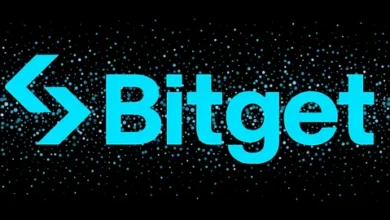
Polkadot Price DOT Price Live Charts and Marketcap
The Polkadot price landscape has become increasingly sophisticated as institutional investors and retail traders recognize DOT’s potential within the evolving cryptocurrency ecosystem. Polkadot represents far more than a traditional digital currency—it functions as a revolutionary blockchain infrastructure that enables seamless interoperability between diverse networks, directly impacting DOT price dynamics through utility-driven demand.
DOT token has established itself as a cornerstone asset in the decentralized finance space, with its price movements reflecting both market sentiment and fundamental network developments. The complexity of Polkadot’s multi-chain architecture creates unique trading opportunities that distinguish DOT price patterns from conventional cryptocurrency assets. These nuances are essential for investors seeking to capitalize on Polkadot price volatility.
Live charts tracking DOT price movements reveal intricate relationships between network activity, parachain deployments, and market valuation. The Polkadot network’s innovative consensus mechanism and governance structure generate specific catalysts that influence price action in ways that traditional technical analysis alone cannot fully capture. These fundamental factors create both opportunities and challenges for traders monitoring Polkadot price trends.
The market cap of Polkadot consistently reflects its position among leading blockchain platforms, with DOT token valuation responding to technological milestones, partnership announcements, and ecosystem expansion. As cross-chain interoperability becomes increasingly crucial for blockchain adoption, Polkadot price movements often serve as barometers for the broader infrastructure sector’s health and growth prospects.
Smart investors tracking DOT price recognize that successful Polkadot trading requires comprehensive analysis combining technical chart patterns, fundamental network metrics, and macroeconomic cryptocurrency trends. This multifaceted approach enables more accurate price predictions and better risk-adjusted returns for both short-term traders and long-term holders accumulating DOT tokens.
Real-Time DOT Price Tracking and Market Dynamics
![]()
Advanced Chart Analysis for DOT Trading
Live charts provide the foundation for successful DOT price analysis, offering real-time insights into market sentiment, liquidity conditions, and emerging trend patterns. Professional traders utilize multiple timeframes when analyzing Polkadot price movements, from high-frequency scalping opportunities on minute charts to strategic positioning based on weekly and monthly price trends.
DOT price exhibits distinct characteristics during different market phases, with bull markets typically showcasing strong momentum following parachain auction announcements, while bear markets often present accumulation opportunities at key technical support levels. Live charts displaying volume-weighted average prices (VWAP) help traders identify optimal entry and exit points for Polkadot positions.
The integration of Polkadot price data across multiple exchanges through live charts reveals arbitrage opportunities and liquidity imbalances that experienced traders exploit for profit. These real-time data feeds enable rapid response to market-moving news, technical breakouts, and fundamental developments affecting DOT token valuation.
DOT Market Microstructure
Order book analysis through advanced live charts reveals the underlying supply and demand dynamics driving Polkadot price movements. Large buy and sell walls often indicate institutional accumulation or distribution phases, providing valuable context for DOT price direction predictions. These market microstructure elements enhance trading precision and risk management.
Polkadot price often responds to specific events within predictable timeframes, creating opportunities for systematic trading strategies. Parachain slot auctions, governance proposal voting periods, and network upgrade implementations generate measurable impacts on DOT token demand that astute traders anticipate and position accordingly.
Comprehensive Market Cap Analysis and Valuation Framework
Polkadot Market Capitalization Metrics
Market cap calculations for Polkadot require the token’s unique economic model, including inflation rates, staking mechanisms, and parachain bonding requirements. The circulating supply of DOT tokens fluctuates based on staking participation rates and auction lock-ups, creating dynamic market cap calculations that differ from fixed-supply cryptocurrencies.
Polkadot’s market cap relative to transaction volume, developer activity, and total value locked (TVL) across parachains provides fundamental valuation metrics for DOT price assessment. These ratios help investors identify potential overvaluation or undervaluation conditions in the Polkadot market, informing strategic investment decisions.
The fully diluted market cap considers the maximum DOT token supply and future inflation schedules, offering a comprehensive perspective on long-term valuation potential. This metric becomes particularly relevant during market cycles when investors focus on fundamental value rather than speculative price movements.
Comparative Valuation Against Blockchain Competitors
Polkadot’s market cap compared to Ethereum, Cardano, Solana, and Cosmos reveals relative market positioning and growth potential. When DOT price trades at significant discounts to comparable platforms based on developer activity, network usage, or technological capabilities, value investment opportunities may emerge.
Price-to-development activity ratios and network growth metrics provide objective frameworks for evaluating Polkadot against competitors. These fundamental analyses complement technical price chart patterns and help investors make more informed decisions about DOT token allocation within cryptocurrency portfolios.
Technical Analysis Strategies for DOT Price Prediction

Essential Technical Indicators for Polkadot Trading
Moving average convergence divergence (MACD) indicators provide powerful signals for DOT price trend changes and momentum shifts. When combined with live charts displaying relative strength index (RSI) and stochastic oscillators, traders gain comprehensive insights into Polkadot price momentum and potential reversal points.
Fibonacci retracement levels prove particularly effective for DOT price analysis, as the token often respects these mathematical support and resistance zones during both bull and bear market phases. Live charts incorporating Fibonacci tools help traders identify optimal entry points and profit-taking levels for Polkadot positions.
Volume profile analysis reveals significant price levels where substantial DOT token trading has occurred, creating areas of support and resistance that influence future Polkadot price movements. These volume-based levels enhance the accuracy of technical analysis predictions.
Advanced Pattern Recognition in DOT Charts
Chart patterns specific to Polkadot price include ascending triangles preceding parachain auction periods, cup-and-handle formations during network upgrade cycles, and head-and-shoulders patterns marking major trend reversals. Recognizing these patterns through live charts provides trading advantages and improved timing for position entries and exits.
DOT price often exhibits unique seasonal patterns related to network governance cycles, staking reward distributions, and development milestone releases. These cyclical elements create somewhat predictable trading opportunities for investors monitoring Polkadot fundamental calendars alongside technical chart analysis.
Fundamental Factors Driving DOT Token Value
Network Development Impact on Price Performance
Polkadot’s development roadmap directly influences DOT price through technology upgrades, scalability improvements, and new feature implementations. Major releases often catalyze positive price movements as market participants recognize enhanced network utility and competitive advantages.
Parachain ecosystem growth creates sustained demand for DOT tokens through slot auctions and ongoing operational requirements. As more high-quality projects launch parachains, the fundamental value proposition of Polkadot strengthens, supporting long-term price appreciation potential.
Cross-chain bridge adoption demonstrates the practical utility of Polkadot’s interoperability features, generating measurable network effects that benefit DOT token holders. These real-world use cases validate the technological thesis underlying Polkadot price premiums compared to single-chain platforms.
Ecosystem Adoption Metrics and DOT Demand
Developer activity metrics, including GitHub commits, active repositories, and protocol integrations. Provide leading indicators of Polkadot ecosystem health and future DOT price performance. Sustained development activity often precedes significant price appreciation cycles.
Total value locked (TVL) across Polkadot parachains reflects real economic activity and user adoption, creating organic demand for DOT tokens through various network mechanisms. Tracking TVL growth through live charts helps investors assess fundamental strength supporting Polkadot price movements.
Institutional adoption announcements and partnership developments generate immediate DOT price reactions while building long-term credibility for the Polkadot ecosystem. These developments often create sustainable demand floors that support prices during broader market downturns.
Investment Strategies and Portfolio Management
Strategic Approaches to DOT Accumulation
Dollar-cost averaging strategies work particularly well for DOT token accumulation due to Polkadot’s strong fundamental development trajectory and cyclical price patterns. Live charts help investors identify optimal timing for implementing systematic purchase programs during market weakness.
Staking strategies for DOT tokens provide additional yield generation while supporting network security and decentralization. Staking rewards, lock-up periods, and slash risk help investors optimize their Polkadot holdings for maximum risk-adjusted returns.
Yield farming opportunities within the Polkadot ecosystem enable DOT holders to generate additional returns through DeFi protocols built on parachains. These strategies require careful risk assessment but can significantly enhance overall portfolio performance during favorable market conditions.
Risk Management for DOT Holdings
Position sizing guidelines for DOT tokens depend on individual risk tolerance, portfolio diversification objectives, and market cycle timing. Professional investors typically limit individual cryptocurrency positions to 2-5% of total portfolio value, adjusting based on Polkadot’s market cap and volatility characteristics.
Stop-loss strategies for DOT price positions require the token’s typical volatility ranges and support levels. Live charts displaying historical volatility metrics help investors set appropriate risk management parameters for their Polkadot trading strategies.
Correlation analysis between DOT price and broader cryptocurrency markets helps investors understand portfolio risk exposure and diversification benefits. Polkadot often exhibits lower correlation with Bitcoin during periods of strong fundamental development, providing valuable hedging characteristics.
Future Outlook and Price Predictions
Long-term DOT Value Drivers
Polkadot’s technological roadmap includes ambitious scaling solutions, governance improvements, and interoperability enhancements that could significantly impact DOT price over multi-year timeframes. These development milestones help investors position for long-term value creation.
Market adoption trends toward multi-chain architectures favor Polkadot’s design philosophy, potentially driving sustained DOT token demand as the cryptocurrency ecosystem matures. This structural shift could support price appreciation beyond typical speculative cycles.
Regulatory clarity developments worldwide may disproportionately benefit infrastructure tokens like DOT, as clear guidelines enable institutional adoption and integration. Polkadot’s utility-focused model positions it favorably for potential regulatory frameworks emphasizing technological utility over speculative trading.
Also Read: Bitcoin is fluctuating while Altcoins are showing strong performance
Conclusion
Polkadot price analysis requires a sophisticated understanding of both technical market dynamics and fundamental network development factors that create long-term value. The DOT token’s unique position within the blockchain interoperability sector generates complex but compelling investment opportunities for investors willing to conduct thorough research and maintain disciplined risk management.
Live charts and market cap analysis provide essential tools for monitoring DOT price movements and identifying optimal entry and exit points. However, successful Polkadot investing ultimately depends on the project’s technological advantages. Ecosystem growth potential and competitive positioning within the evolving cryptocurrency landscape.
As Polkadot continues developing its parachain ecosystem and expanding cross-chain capabilities. DOT price performance will likely reflect these fundamental improvements alongside broader cryptocurrency market trends. Investors combine technical analysis with fundamental analysis. Research and prudent risk management are best positioned to benefit from Polkadot’s. Continued evolution and potential price appreciation in the dynamic cryptocurrency market.



